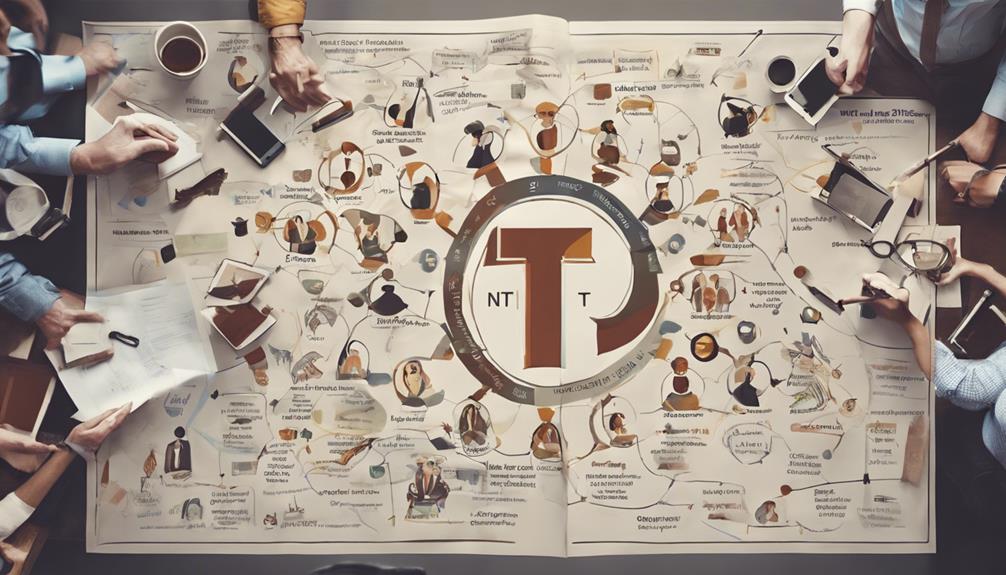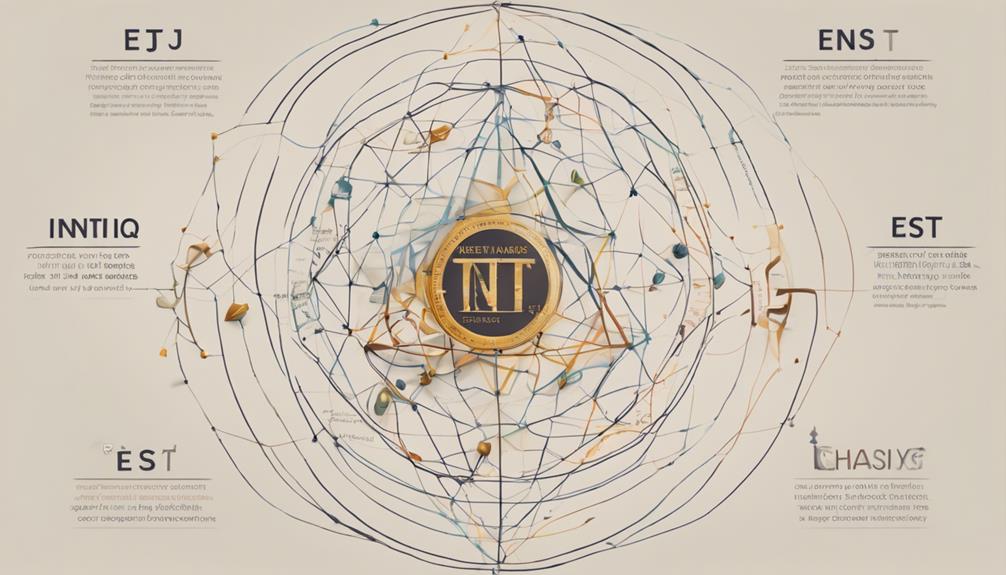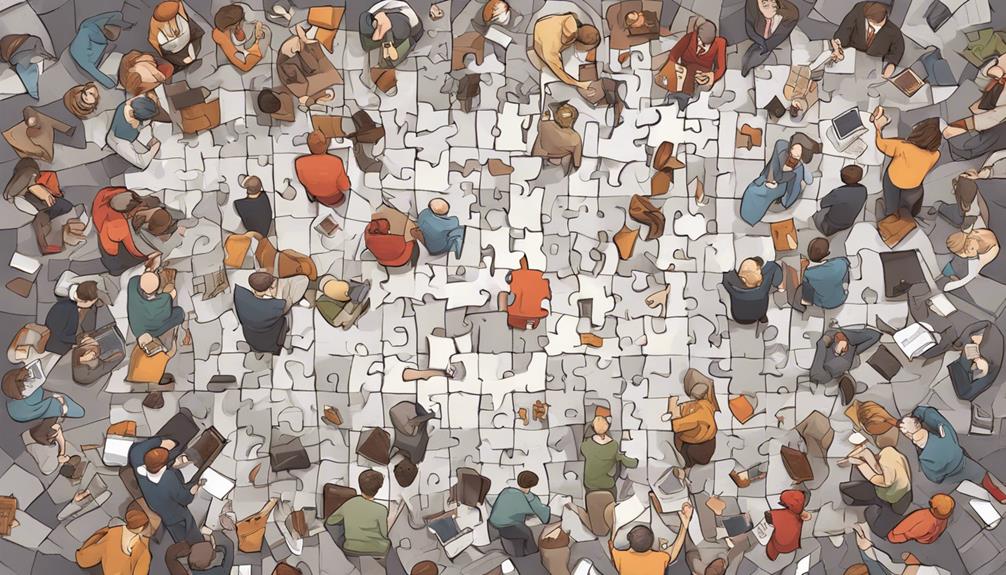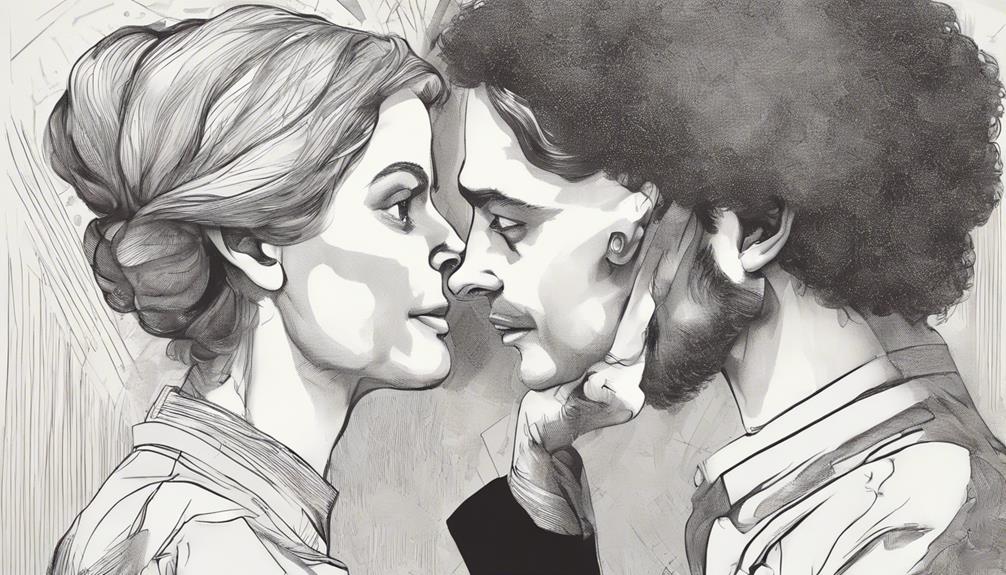When analyzing how INTJs and ESTJs handle relationships, it’s intriguing to observe that although both belong to the J category, their tastes vary greatly.
While INTJs are known for their strategic and introspective nature, ESTJs are often recognized for their practical and results-driven mindset.
The divergence in their cognitive functions and personality traits sheds light on the distinct ways they navigate emotional connections.
By exploring these variations, we can gain a deeper understanding of how these two types navigate the complex terrain of relationships.
Key Takeaways
- ESTJs prioritize practicality and stability, while INTJs focus on emotional depth and intellectual stimulation.
- Communication styles vary: ESTJs prefer concrete details, INTJs delve into abstract concepts.
- Decision-making differs: ESTJs seek efficiency, INTJs prioritize innovation and future implications.
- Emotional expression disparities exist, with INTJs leaning towards logic and ESTJs towards traditional values.
Cognitive Function Variances
Exploring the cognitive function variances between ESTJs and INTJs reveals fundamental differences in their approaches to relationships and decision-making. ESTJs, leading with Te and Si, are action-oriented individuals who thrive on practicality and past experiences.
In contrast, INTJs, with their Ni and Te functions, are drawn towards abstract concepts and long-term vision. While ESTJs rely on concrete data and facts to navigate choices, INTJs place their trust in intuition and strategic thinking processes. These contrasting cognitive functions shape how ESTJs and INTJs perceive the world and interact within it.
ESTJs excel in executing plans with precision, focusing on the here and now, while INTJs are adept at envisioning future possibilities and formulating strategic long-term goals. Understanding the cognitive disparities between ESTJs and INTJs illuminates why these personality types exhibit diverse approaches in relationships and decision-making scenarios.
Relationship Prioritization Variances

In understanding the relationship prioritization variances between INTJs and ESTJs, it becomes evident that their distinct focuses shape the dynamics and depth of their connections.
- INTJs prioritize deep emotional connections and intellectual stimulation, seeking partners who can engage them on a profound level.
- ESTJs prioritize practical aspects, stability, and loyalty, valuing partners who provide a sense of security and reliability.
- INTJs may focus on personal growth and self-awareness within relationships, constantly striving for improvement and introspection.
- ESTJs may prioritize traditional values, routines, and family dynamics in relationships, emphasizing the importance of shared beliefs and established norms.
These variances in relationship prioritization can lead to differences in communication styles and conflict resolution approaches, as INTJs may lean towards open discussions and introspective conflict resolution, while ESTJs may prefer practical solutions and adherence to structured methods. Despite these differences, both types value loyalty and commitment in their relationships, albeit through different lenses shaped by their individual priorities.
Communication Styles Discrepancy
The distinct communication styles between INTJs and ESTJs play a pivotal role in shaping the interactions and understanding within their relationships. ESTJs tend to focus on concrete communication, emphasizing practical matters and tangible details, while INTJs lean towards abstract communication, delving into complex theoretical concepts.
ESTJs value direct and straightforward communication, preferring discussions that are to the point, whereas INTJs enjoy inquisitive and analytical conversations that stimulate their intellectual curiosity. This discrepancy can sometimes lead to challenges, especially when it comes to emotional expression. INTJs may find it difficult to openly express their emotions, often preferring intellectual discussions over emotional ones.
Understanding these differences in communication styles is essential for INTJs and ESTJs to navigate their relationships effectively. By acknowledging and respecting each other's preferred modes of communication, they can foster better understanding and connection, bridging the gap between practicality and theory in their interactions.
Decision-Making Contrasts

Navigating relationships between ESTJs and INTJs often involves understanding and adapting to their contrasting decision-making approaches.
- ESTJs lean towards practicality, efficiency, and structured processes, drawing on past experiences and guidelines to make decisions.
- In contrast, INTJs focus on future implications, strategic planning, and innovative solutions, seeking patterns and long-term vision in their decision-making process.
- ESTJs thrive in environments with clear rules, orderliness, and stability, reflecting their preference for structured processes.
- On the other hand, INTJs value creative problem-solving, strategic thinking, and growth, leading to a preference for innovative solutions and long-term vision.
These contrasting approaches can lead to differences in problem-solving methods, goal-setting strategies, and overall decision-making processes in relationships. Understanding these distinct styles can help ESTJs and INTJs navigate their differences and find common ground in creating successful and fulfilling partnerships.
Emotional Expression Differences
Transitioning from decision-making contrasts, observing emotional expression differences between ESTJs and INTJs reveals significant challenges in connecting and communicating effectively within relationships.
INTJs, known for their struggle with open emotional expression, often prioritize intellectual stimulation and deep conversations over sharing feelings openly. On the other hand, ESTJs, with their concrete communication style, may find it hard to connect with the emotionally reserved nature of INTJs.
While INTJs value logical reasoning, this can sometimes make them appear aloof or distant in emotional situations, which might be off-putting to the emotionally expressive ESTJs who appreciate deep conversations.
To bridge this gap, understanding boundaries, respecting each other's differences, and actively seeking mental clarity are crucial for fostering a deeper connection between INTJs and ESTJs. By acknowledging and working through these emotional expression disparities, both personality types can enhance their relationships and create a more harmonious and fulfilling bond.
Frequently Asked Questions
What Is the Difference Between ESTJ and Intj?
ESTJs focus on tradition and stability, valuing practicality and rules, while INTJs prioritize innovation and strategic thinking, emphasizing independence and long-term vision. These differences in cognitive functions shape how they approach relationships and decision-making.
How Do INTJs Approach Relationships?
We approach relationships by prioritizing deep intellectual connections and meaningful conversations. Independence, personal growth, and introspection are key. Emotional expression may be a challenge, but problem-solving and logical reasoning shine. Quality trumps quantity; solitude and intellectual engagement are valued.
Who Is Least Compatible With Intj?
We find INTJs least compatible with individuals like ESFPs, ESTPs, ISTPs, and INFPs due to conflicting cognitive functions and communication styles. Emotional expressiveness over logic, as seen in ESFJs and ENFJs, may also clash with our intellectual needs.
Why Is Dating Hard for Intj?
Dating can be challenging for us INTJs due to our need for depth and intellect. Emotional expression struggles and high standards may hinder connections. We focus on growth, authenticity, and finding meaningful matches.
Conclusion
In conclusion, the contrasting approaches of INTJs and ESTJs in relationships are like a dance of logic and tradition, intellect and practicality.
While INTJs delve into the depths of thought and analysis, ESTJs provide a steady foundation of structure and loyalty.
Understanding and embracing these differences can lead to a dynamic and enriching partnership that combines the best of both worlds.
So, let the harmony of opposites guide the way to a fulfilling and balanced relationship between INTJs and ESTJs.
Augustus is the visionary leader and Editor-in-Chief of Personality-Test.net. With an unwavering commitment to quality and authenticity, he oversees all content, ensuring it enlightens and empowers our audience. Augustus believes deeply in the transformative power of self-awareness and is dedicated to making Personality-Test.net a beacon for those on a journey to understand themselves better.










